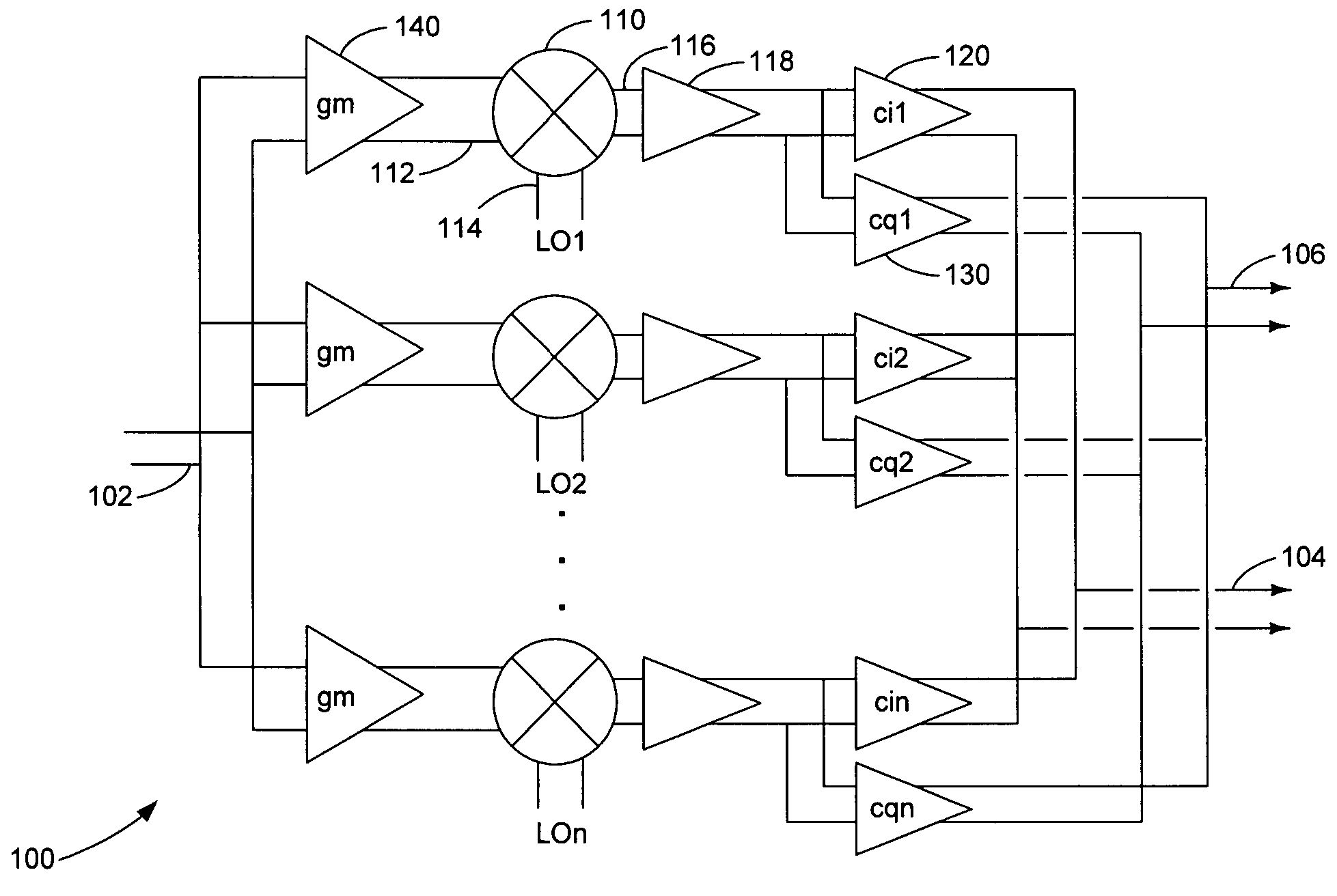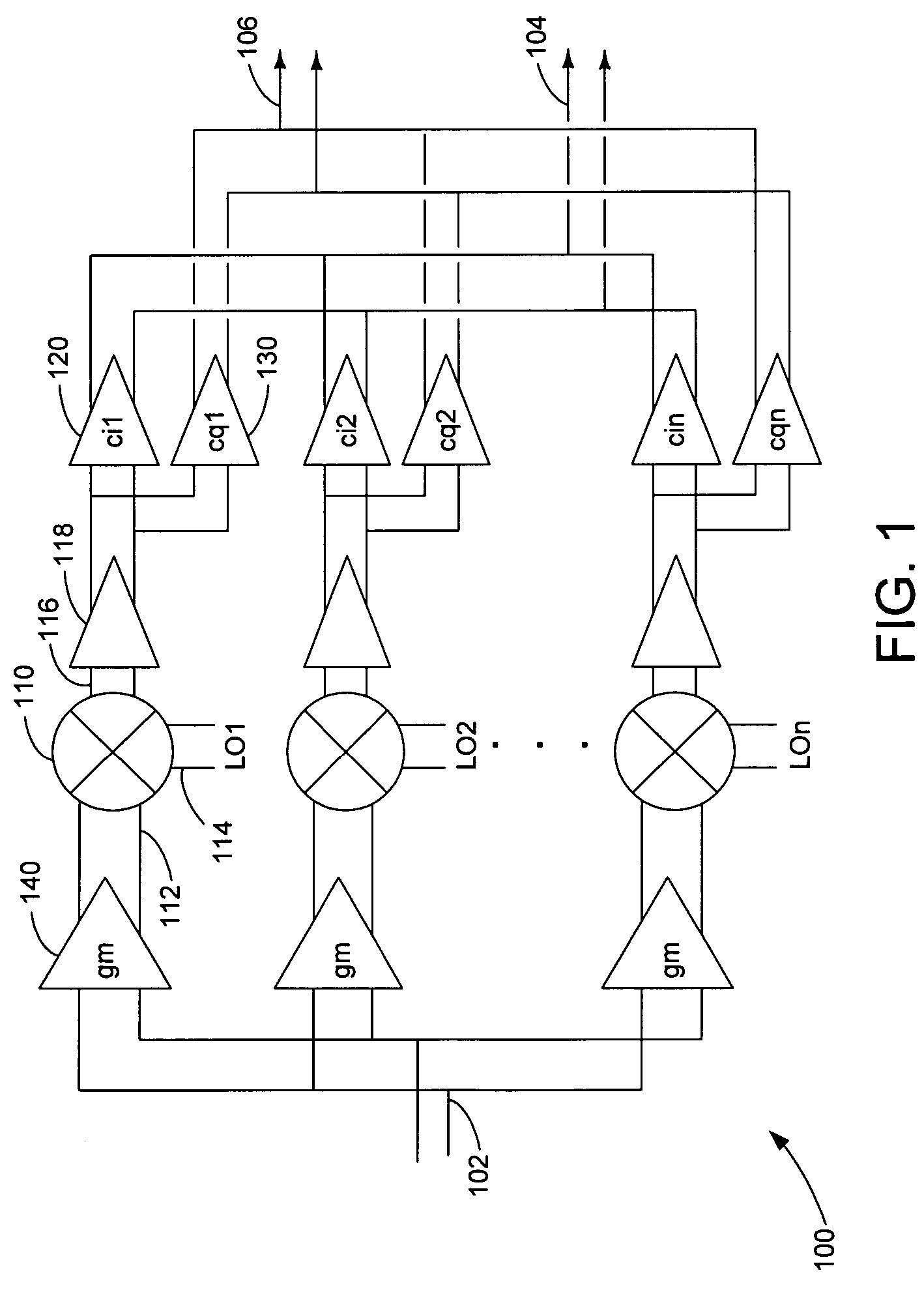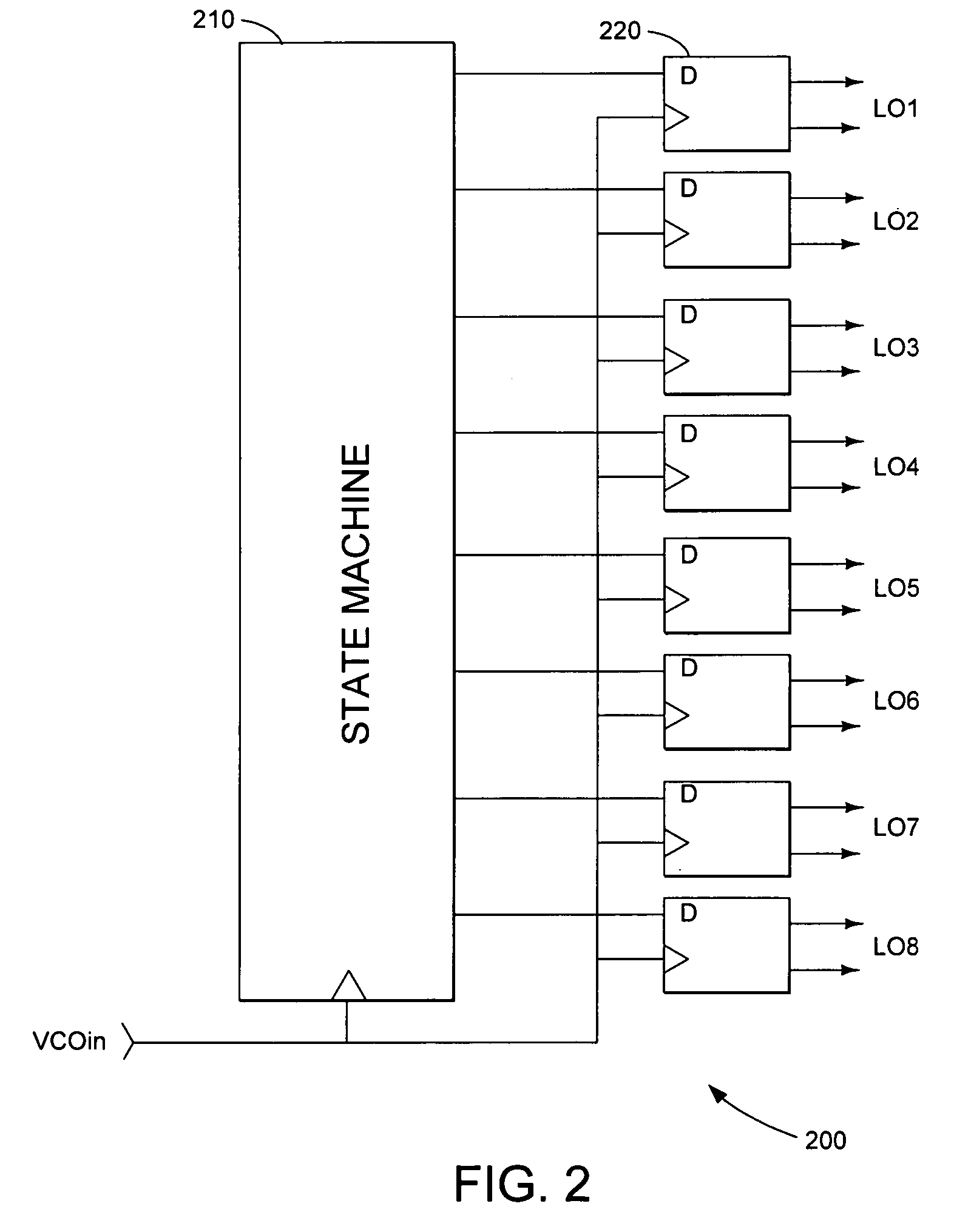Harmonic suppression mixer and tuner
a mixer and harmonic suppression technology, applied in the field of radio frequency mixers, can solve the problems of undesirable harmonic conversion gain, interference into the tuned channel, unsuitable for downconverting an rf, etc., and achieve the effect of less harmonic suppression and good suppression of harmonic signals
- Summary
- Abstract
- Description
- Claims
- Application Information
AI Technical Summary
Benefits of technology
Problems solved by technology
Method used
Image
Examples
Embodiment Construction
[0044]FIG. 1 shows harmonic suppression mixer 100 according to the present invention. Harmonic suppression mixer 100 has common input signal 102 that drives transconductance amplifiers 140 to provide signal isolation between each switching mixer 110. Transconductance amplifier 140 prevents the LO signal leaking at switching mixer 110 input from coupling to other mixers and to common input 102. LO signal leakage back to the common input tends to cancel each other due to LO phasing, thus amplifier 140 is optional. Transconductance amplifier 140 can be any type of amplifier depending on the signal type required at the input and output and each can have a different gain. Harmonic mixer 100 comprises multiple switching mixers 110, each with signal input 112, local oscillator (LO) input 114, and signal output 116. All signals are differential drive and can be Gilbert cell or other mixer topologies that are known. A bank of mixers is shown, for example comprising 8 mixers. LO signal 114 is...
PUM
 Login to View More
Login to View More Abstract
Description
Claims
Application Information
 Login to View More
Login to View More - R&D
- Intellectual Property
- Life Sciences
- Materials
- Tech Scout
- Unparalleled Data Quality
- Higher Quality Content
- 60% Fewer Hallucinations
Browse by: Latest US Patents, China's latest patents, Technical Efficacy Thesaurus, Application Domain, Technology Topic, Popular Technical Reports.
© 2025 PatSnap. All rights reserved.Legal|Privacy policy|Modern Slavery Act Transparency Statement|Sitemap|About US| Contact US: help@patsnap.com



